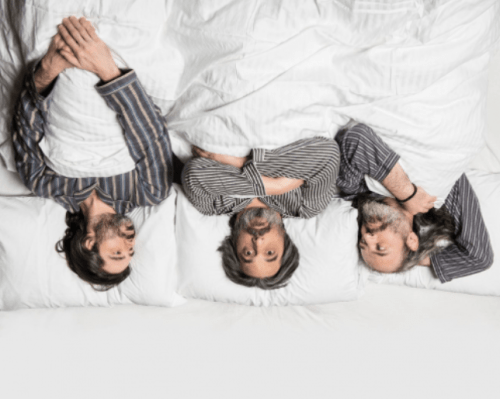
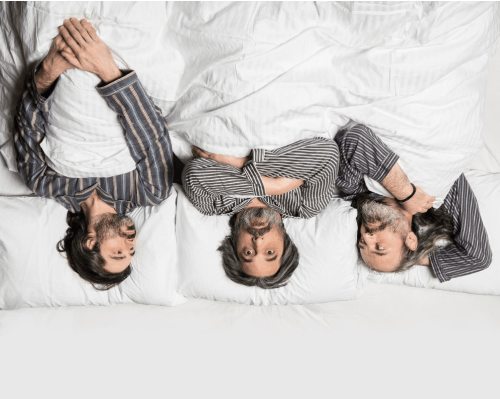
Imagine a space in which artists can come together, share ideas and inspirations, and put ego and competition aside. Imagine a space in which questions such as “but what if I can’t sell this work” and “can I really afford to focus on what I want to do?” are not issues. Imagine a space in which artists can give in to pure, unbridled creativity, safe in the knowledge that all the fruits of their labour will be shared amongst them equally. This was precisely the ethos behind the Sleeping with the Enemy project, founded by Syrian artist Semaan Khawam and Lebanese Fadi El Chamaa. Working with Syrian Ghylan Safadi in their first iteration, and Lebanese Sara Chaar in their second, to date, the initiative has been a resounding success. The Journal spoke to Khawam to find out more.
From his Lebanese accent, it would be hard to guess that Semaan Khawam is originally Syrian. He first moved to Beirut in 1988, and has called the Lebanese capital home for over 30 years, leaving only briefly during the 2006 War. In 2010 he met Lebanese painter Fadi El Chamaa, marking the beginning of many collaborations together as the two artists worked together out of Khawam’s studio. During the Arab Spring, Khawam opened his studio – a generous industrial space in the Dora area of Beirut – to all Syrian creatives travelling through Beirut. Whether artists and poets or filmmakers and journalists, all were welcome and, Khawam says, “stayed either a few days or up to a year.

Fadi El Chamaa, Stone People, 10 x 5 cm (series), acrylic on paper
The ability to reconnect with Syria through this experience, and to work alongside so many different creatives and intellectuals from different walks of life sparked a seed. After four years, it also sparked a need for solitude, having operated what was essentially a caravanserai. In 2016 Khawam closed his studio temporarily and travelled with El Chamaa to the mountains outside Beirut for a self-imposed artist residency during which they were able to take time to focus on their own work again, and also process the numerous emotional, political and social upheavals of recent years. It was here that they came up with their artistic manifesto entitled The Hegemony of Aesthetics. It begins: “Two different universes can strive and prosper in the same limited space.” This, in turn, led to the birth of Sleeping with the Enemy, an artist project co-hosted by Khawam and El Chamaa in which they invite a third artist to join them for a residency in a gallery space during which the artists collaborate and exchange ideas and techniques and, most importantly, price all work equally and share profits equally. The result was nothing short of revolutionary, as Khawam explains:
How did Sleeping with the Enemy come into being?
While hosting the Syrian community in my studio, I had people coming and going from widely different worlds, different orientations and different political backgrounds. I did not always agree with each of their political or religious choices, but what we did have in common was art. When I took my sabbatical and created the Hegemony of Aesthetics with Fadi, this was very much on our mind: what do we have in common and why don’t we actually focus on that more? How could that help us, as artists, financially and creatively?
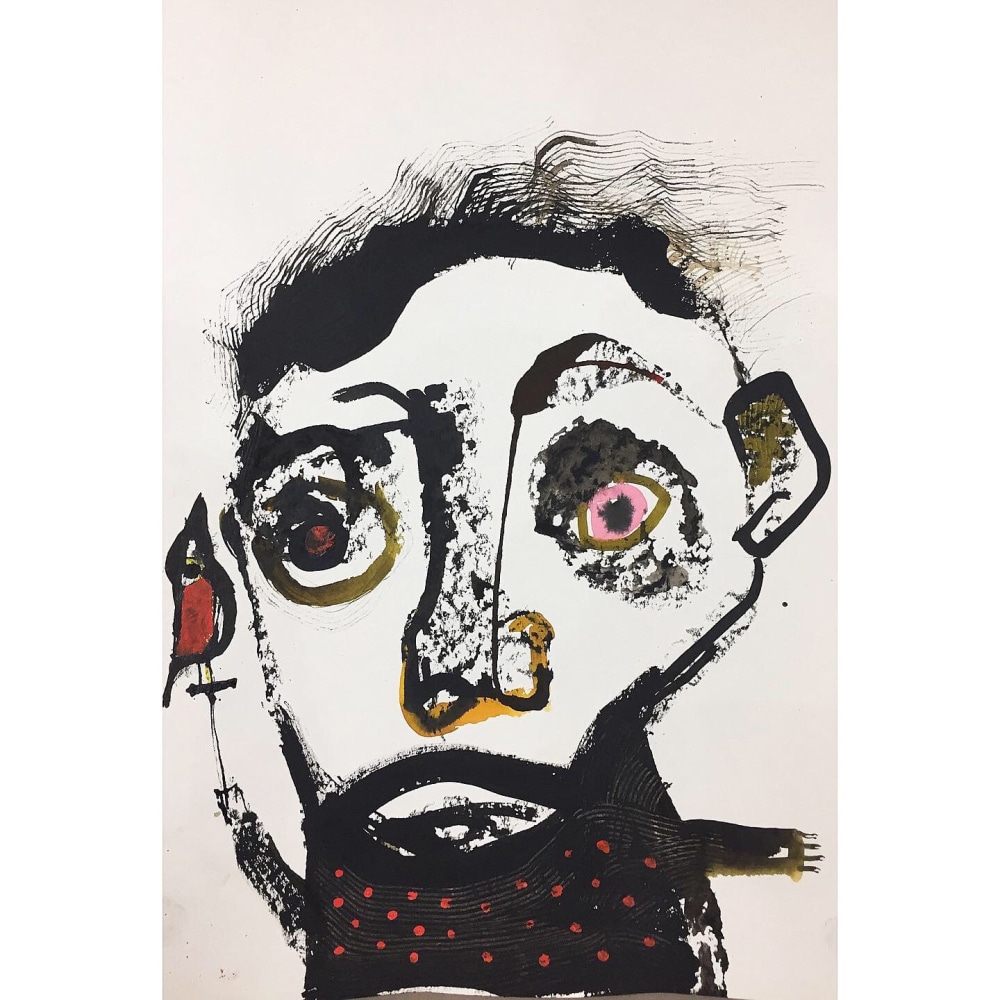
Semaan Khawam
So who is the ‘enemy’ in this equation?
We are! We are each our own worst enemy – this is why society is failing. I have been an activist for 30 years and never won one single battle. If you don’t open up, if you’re not open to change, or willing to effect change and see the bigger picture, then it’s not only society as a whole that suffers – you do too. We have so many problems because we are fighting each other and fighting ourselves: am I better than that person? Do I deserve more than that person? The list goes on.
How does ‘Sleeping with the Enemy’ work, on a practical level?
Three artists (Fadi and myself and a third we invite to join us) spend three weeks working eight hours a day (non negotiable) to produce new work. The price of the artwork is the same for all three participants and all proceeds from their sale is equally divided amongst the three, ensuring a safety net and eradication of competition. If, 10 years from now, one of us sells a work produced during this time together, the proceeds are still split. It’s an even playing field and, as Ghylan said, “challenges you to kill your ego”.
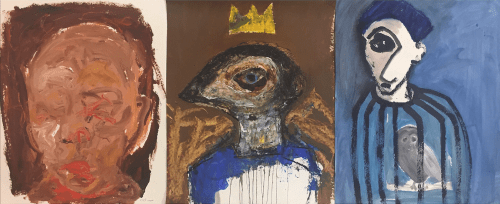
Artworks (left to right): Ghylan Safadi, Semaan Khawam, Fadi EL Chamaa
Why was this important to you all?
In Lebanon, we don’t have social security systems for artists – so, especially as a self-taught artist, the onus is on you if something goes wrong and you pay everything out of pocket: we have no health insurance, no retirement fund. It turned out that Lebanese and Syrian artists living in Lebanon have this in common – they have no safety net: we face the same insecurity. Ghylan, who only came to Lebanon six years ago, put it really well when he said: “Starting out in a new country is always difficult, especially coming from a country at war, and especially because Beirut is expensive.”
That must make it hard not to feel like you’re always in competition with your fellow artist for a piece of the pie…
Yes. Sleeping With the Enemy is about working together, to break the system that pits us against each other as competitors fighting for gallery exposure and collectors. Allow creativity to flourish and take away the burden of financial worry.
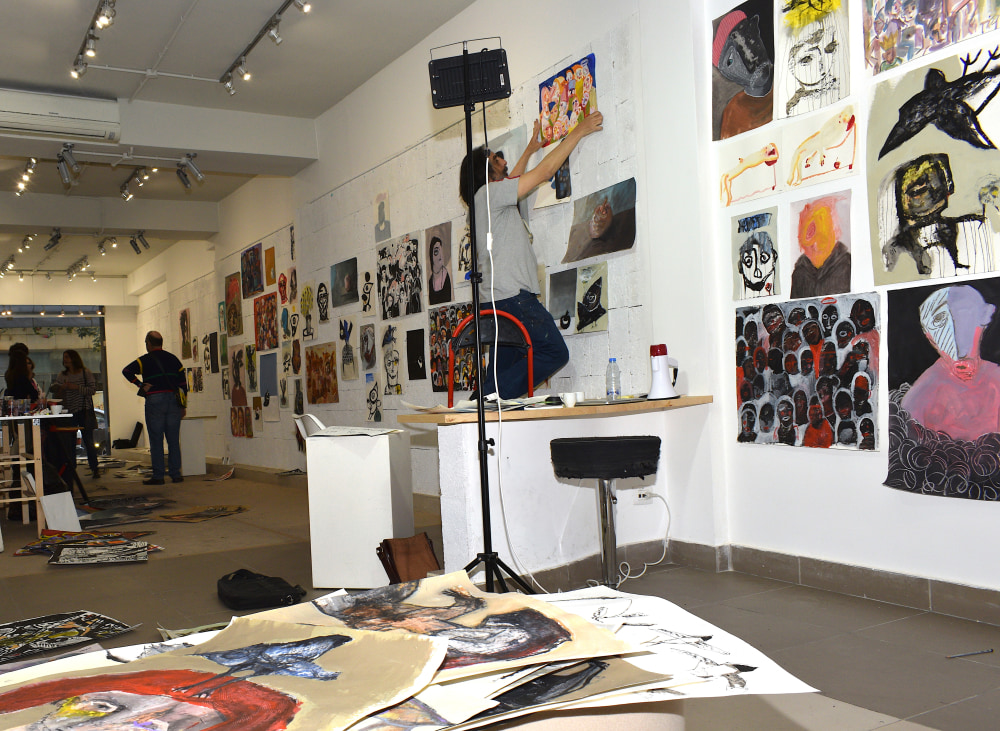
Tell us about your first edition, ‘Sleeping with the Enemy: ONE’, which you subtitled ‘Solidarity between Lebanese and Syrian artists’.
The first production of Sleeping With The Enemy was focused on collaborating with an artist struggling to survive (like us), whose painting process is rich enough and who has the courage to venture out of his comfort zone. Being Syrian myself, living in Beirut, as an insider/outsider made it doubly important. Ghylan, who is newer here, feels it even more keenly, perhaps: “Syria has such a wonderful history, from Palmyra through to our historical museums, to contemporary art, poetry and beyond. Seeing such destruction due to the war has been difficult. Starting out anew, as an artist, has been difficult. Feeling like others don’t understand your experience can be alienating.” I absolutely agree with him, and his work and personality resonated with us and we knew him already. The result was 21 intense but amazing days of working together within KAF Contemporary gallery, with music nights, poetry readings, and so on. I think Fadi and I couldn’t agree more with the way Ghylan has described the project as: “different minds and different styles but sharing something special – friendship and respect.”
What was the audience reaction like?
It was unbelievable; we truly did not expect such a turnout. People seemed to identify with the concept, and because we worked on paper, the work was so very affordable. People toldl us they had always perceived art to be expensive and inaccessible. This wasn’t a white cube gallery setting designed to be intimidating; we had it set up like a studio (well, it was our studio, even if it was in a gallery space) and our works were on the tables, on the floor – people could pick what they liked and it was as easy as that. It was truly egalitarian.
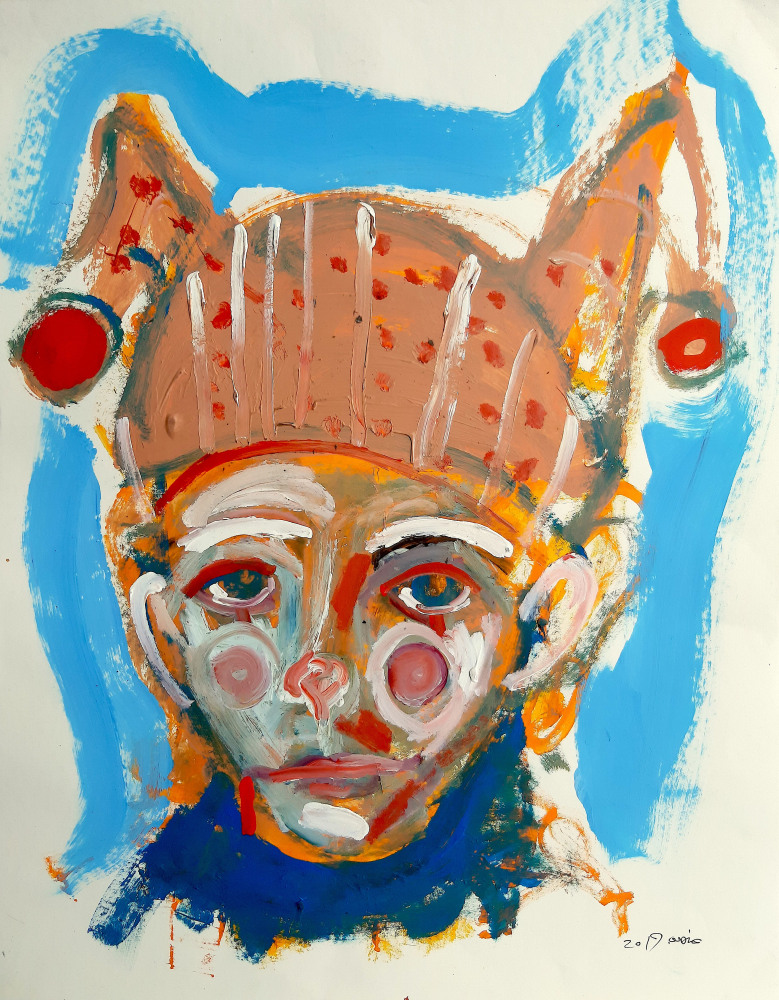
Ghylan Safadi, Acrylic on Paper, 2019
Were there any challenges or adjustments to working together, in that way?
Absolutely – when we began, we were simply working in the way we would normally. After the first week, we stopped, put all our work on floor, took a step back and realised we hadn’t produced anything new. If all we could do was produce what we normally produced, artistically, this would have been a failure. Where would the growth have been? Ghylan said “Art needs to be challenged by something new, and a project like this is not just an exhibition, but a social movement. When artists collaborate with each other, you can make your art better, it can lead to something magical.” So we changed the colours and methods we work with, and it was amazing to see new things in our work – a new language, new themes. We must have produced more than 500 works on paper, of which about 200 sold. And I know the effects are long-term – Ghylan, for one, incorporates some of the ideas and techniques we experimented with in his work.
What appealed to you about working together?
What interests me is this sort of collective work atmosphere, where you can learn, and be inspired by, other artists’ energy and mind-sets. You can ask each other questions, and also be in direct contact with people who can both like or dislike your work. You can break the rules and set new ones. Fadi describes it as a “profusion and richness, as if secret doors are unlocked”, and I agree.
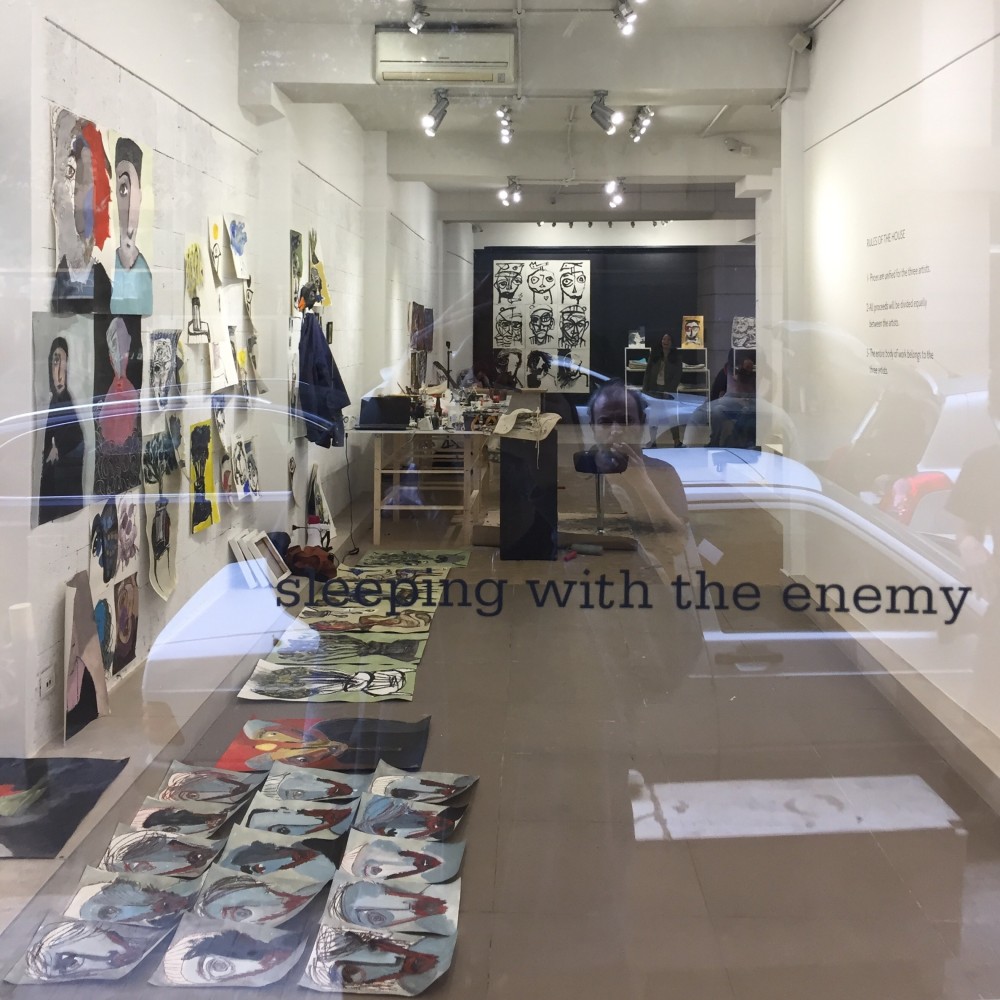
What sort of issues do you hope the project has highlighted so far, on a larger level?
I think Fadi put it really well, actually, in our discussions around this piece, so I’ll let him comment on this one: “The enemy of the artist is, firstly, himself, but it is also the wider Arab/Middle Eastern culture: Artist versus artist, Syrian versus Lebanese, man versus woman, gay versus straight, figurative versus conceptual, government versus people, rich versus poor, hope versus despair, the list goes on. By identifying our differences and then accepting them, and their reality, and knowing that no matter what these differences are we are still traveling in the same boat (or bed) then the only way to get to a safe shore is to use these differences to work together towards a common goal.”
To read more about Sleeping with the Enemy, their projects to date and stay up to date with their upcoming productions and support the artists, please visit sleepingwiththeenemyproduction.com/
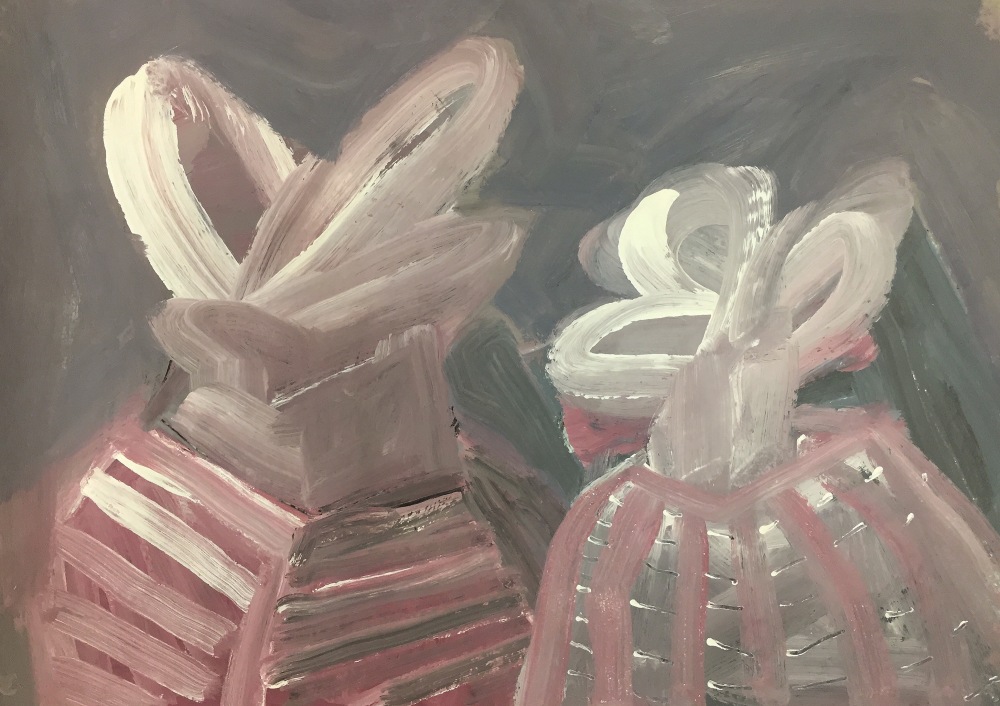
Fadi El Chamaa, Les Fleurs, 52 x 75 cm, acrylic on paper
About the artists:
Fadi El Chamaa
Born in 1960 in Beirut, Fadi El Chamaa is a self-taught contemporary abstract portrait painter based in Baabdat. El Chamaa sees his work as a revelation of the elusive nature of post-identity. Combining a playful nature with an insatiable hunt for the new, he creates a new process for each series of work converging abstraction and realism, the known and the unknown, the sane and the insane. His idiosyncratic work draws the viewer into an intuitive reality.
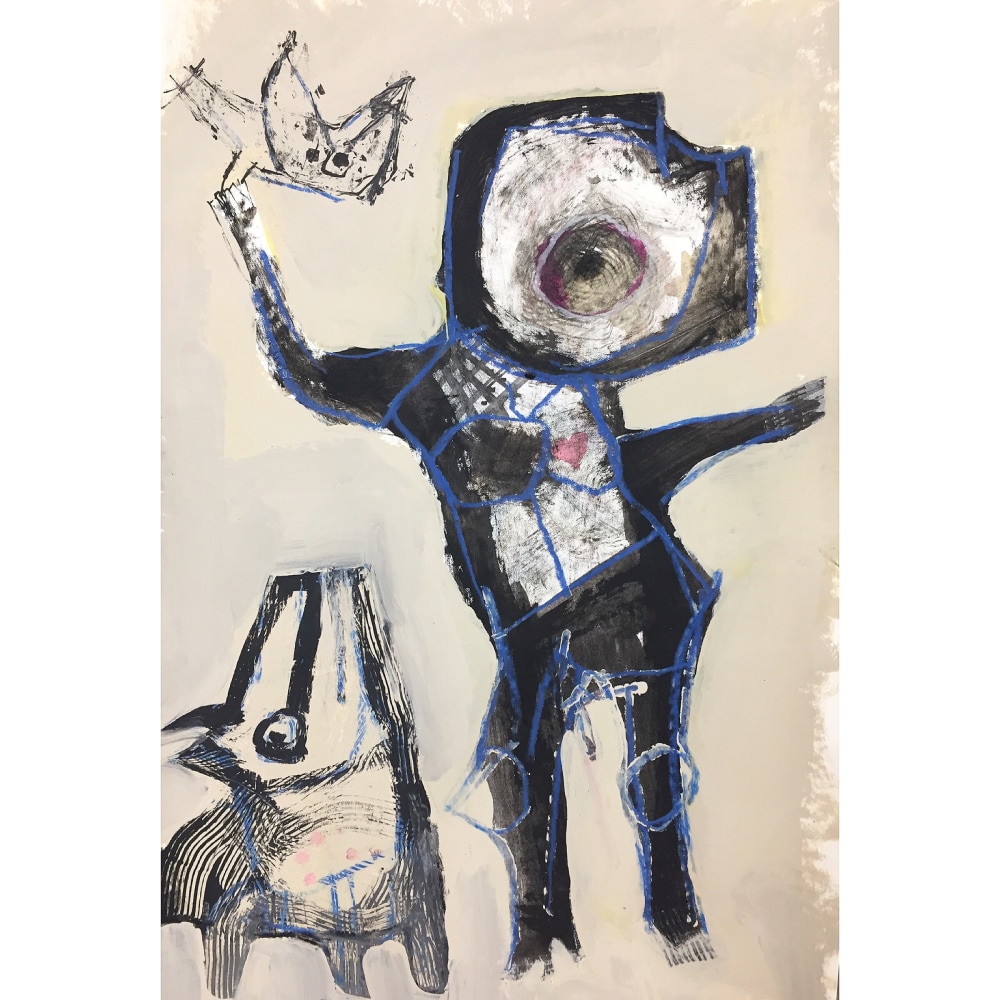
Semaan Khawam
Semaan Khawam
Born in Damascus in 1974, Semaan Khawam continues to live and work in Beirut. The self-taught multidisciplinary Khawam is a painter, sculptor, graffiti and installation artist whose work is informed by the daily reality of the city that he lives in. He uses his work to draw attention to political contradictions, social injustice, the lack of cultural appreciation and other uncomfortable realities. Early in 2012, he spray painted an armed soldier on a wall in Gemmayzeh to remind people of the Lebanese Civil War, something that he feels has been forgotten. His arrest for this act drew international attention to the limits on free speech and artistic expression that Khawam and other Lebanese artists work within inadvertently but also ironically reinforcing his earlier messages. Since then, graffiti has been decriminalised in Lebanon In addition to being a visual artist, Khawam is also an actor, director, script-writer, prop designer for film and theatre, poet and internationally published author. His art has been exhibited in Lebanon and Europe.

Ghylan Safadi
Ghylan Safadi
Born in Swaida, Syria, in 1977, Ghylan Al Safadi graduated from the Department of Painting, Faculty of Fine Arts, Damascus University in 2002. He held solo exhibition and has participated in group shows in Beirut, Swaida, and Damascus. Safadi’s skills range from carving, to prints and shadow-theatre character design. He designed characters that were used in the Khezreer performance in Damascus in 2005. In 2008, he founded Al Qimma (The Peak), a specialised institute to teach theatre and art to children in his hometown, Swaida.